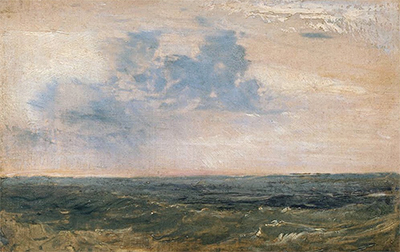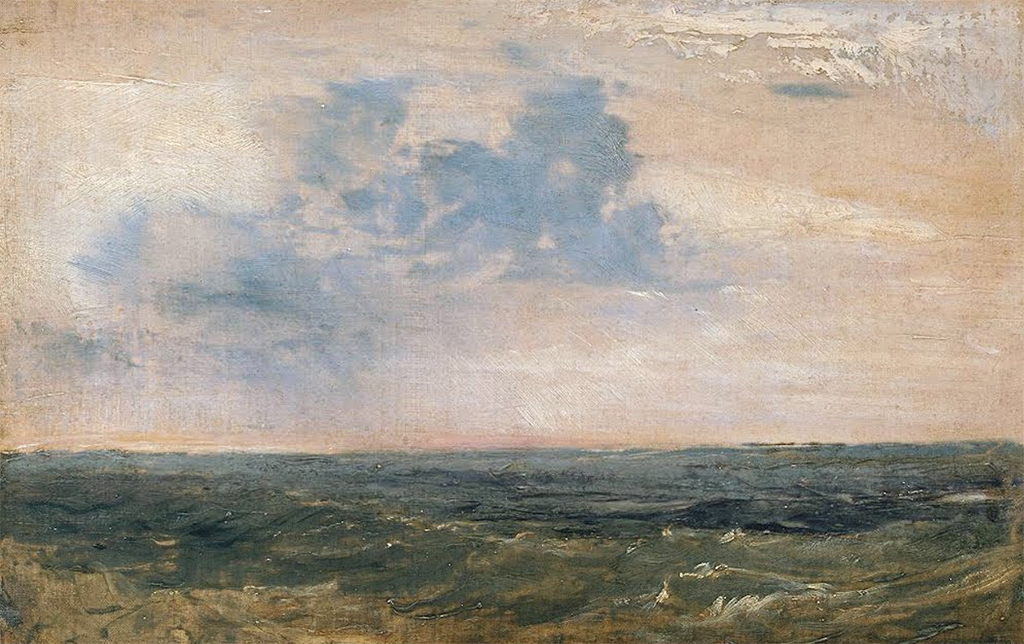This study was completed by JMW Turner in 1827 and was bequethed to the nation in 1856. The artist produced a number of these simple seascapes as a method to practising elements of later artworks.
One can look for miles from the coast of the Isle of Wight, and this small island just off the southern mainland of England retains a unique charm with travellers today. Turner visited this region several times in his lifetime and found a good deal to inspire his work. There was a quietness here which he found hard to match in the South of England, such was its growing population. It was also slightly less modern than the mainland, just as it is today, and perhaps that appealed to his love of classical scenery which lied at the root of much of his work.
Here we find minimal detail for this study work. There is a clear sky with tones of blue and light pink. We can actually spot individual brushstrokes, and marks from other tools, as the artist did not use as many layers of blend as he normally would. The sea is dark, with tones of blue, green and brown. It looks cold, and typically British in appearance. There are no extra details than this, no ships, no towns, nothing. He was clearly just perfecting his work with sea and sky in order to prepare properly for a later piece, which may well also have been in the Isle of Wight.
As mentioned elsewhere, Turner loved to visit the seaside locations of the UK for inspiration and the Isle of Wight proved to be one of his favourites. View from the Terrace of a Villa at Niton, Isle of Wight, Carisbrook Castle, Isle of Wight and Cowes, Isle of Wight are three other examples of the many pieces that he created here, many of which would have been planned via quick sketches made at the scene. He would then return to his studio in order to work on the more complex oil paintings. The artworks mentioned here are also fairly varied, though he would probably have produced several versions of the same angle and views, some of which may since have been damaged or lost.





